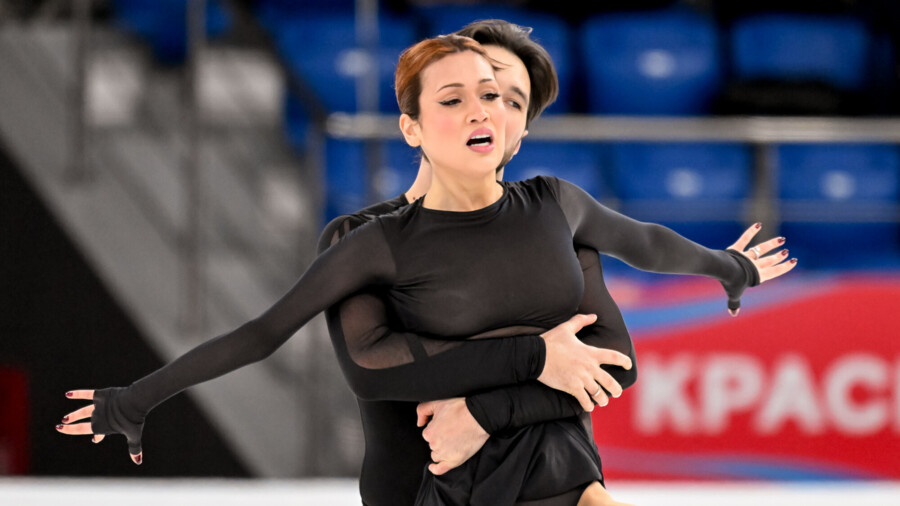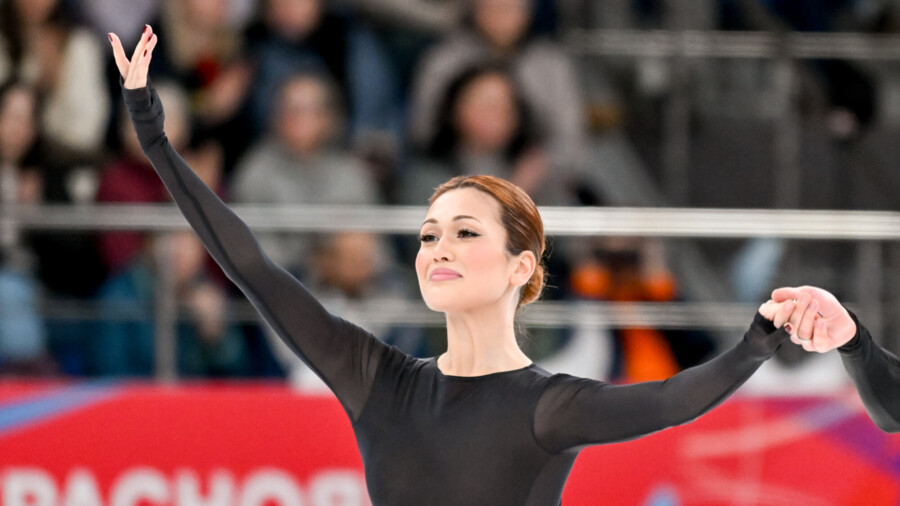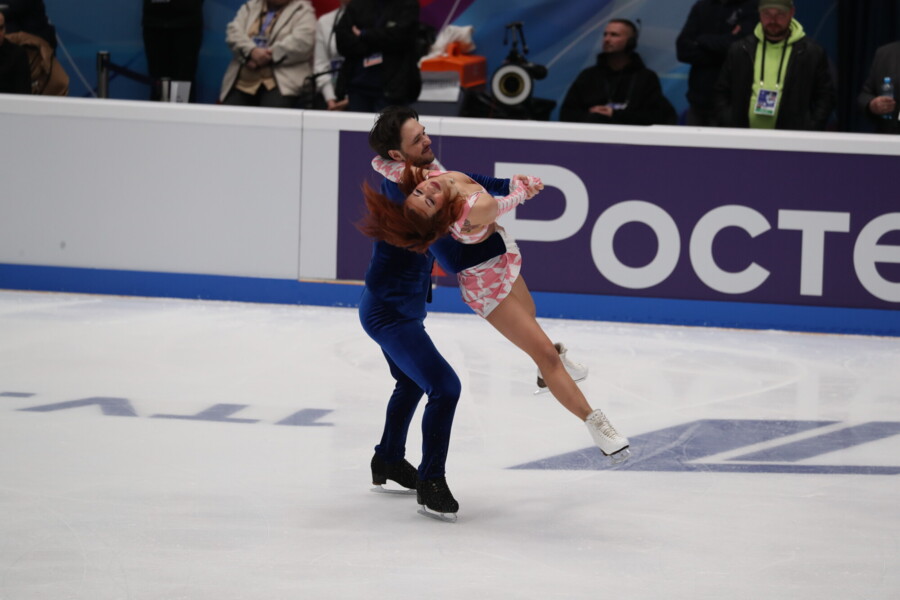Hello dear reader! The Russian Figure Skating Grand Prix series has just ended, which means your revealing columnist on the world of figure skating is back. Today I want to tell you why the career of a figure skater is not so long and what are the daily difficulties that athletes face.
Many people wonder: why don’t skaters perform more often? Why are competitions held once, God forbid, twice a month? Listen, the hockey team plays matches every other day, the football players also meet on the field several times a week… Why are they so lazy in terms of numbers? I wrote earlier in columns that during the two days following the competition, I was practically in a neurosis for about forty hours. So let us tell you how the skater prepares for the coveted four minutes on the ice.
Since April, meticulous and creative research into music, images, elements and finds has continued. We often spend four to seven hours a day on the ice in the off-season. Single dancers often twirl their fingers at their temples when we dancers tell ourselves that we can struggle with a single choreographic trick for two hours without stopping. Ice dancing is all about the details: perfect musicality, clean edges, careful crafting of each arc for synchronicity, parallelism, positional proximity and artistry. After all, what distinguishes a good dancer is the interaction and unity of partners, combined with emotionality, artistry and technical skating.
Then, about a month before the competition, active preparation for the tournament begins. The difficulty is that a typical marathon runner doesn’t run 26 miles every day to prepare for the race. In figure skating, no matter how much you practice the program in parts and pieces, you cannot develop physical endurance without whole skates. You can run on a treadmill, do weight training in the gym – to no avail. The muscles used on the ice can only be developed by the number of skates.
And former singles skaters will happily tell you that ice dancing is a colossal workload. For example, my dear friend Artem Frolov was completely sure that, performing a freestyle with quadruple jumps, he would cope with twists and runs without any effort!
The difficulty of ice dancing lies in something else: complete immersion in the image, emotionality, artistry and psychological stress during training. It would seem like a simple four minutes, but you don’t even have the strength to bow after skating, you’re a squeezed lemon. It is in ice dancing that the culmination of professionalism is the emotional commitment to the judges, the entire room and each person in the arena. With your energy, you must capture each of the members of the brigade, force them not to breathe and, without blinking an eye, follow your every next move. It doesn’t matter what your mood is, whether your leg/arm/soul hurts, whether you had an argument with your partner and you can’t see him – you need to take the starting position, disregard everything external, log in. energy with the person next to you, and when your hands go numb from fatigue, your leg muscles and the taste of iron rush into your gums – don’t show it and skate with the same speed and the same purity as in the first seconds. And so on, day after day, with each training session. I’m sure Gabriella Papadakis spoke about this difficulty and emotional exhaustion, which is why she missed the Pre-Olympic World Championships.
And now we are in optimal shape, we are already used to slowing down our heart rate from the third minute of skating, and the day of our flight to the other side of the country/planet has arrived. With all the jet lag and time zone changes that come with it. Two days of competition are used 24 hours a day, every minute. Since time immemorial, it is the dancers who go to official training as if they were going to a departure: hairstyle, costume, makeup, performance, everything happens like a competition. It doesn’t matter if it’s 6 a.m. or 9 p.m.
Training at 8:15 a.m.? This means a 7:00 a.m. warm-up. As a result, the hotel bus leaves at 6:30 a.m. and the ride is at 4:00 a.m. Twenty minutes to become aware of yourself, a cold shower, put on makeup, do your hair and curls, pack your suitcase with a suit and skates. At 9:00 a.m., bus to the hotel, breakfast, take care of your hair, remove your makeup, take a nap and… it all starts again: makeup, hassle with the symmetry of the arrows, hair styling, ironing costume, preparation, bus at 2:30 p.m., warm-up at 3:00 p.m. half an hour before going on the ice, change clothes, cut the tights so that they do not stick out in the cut of the suit, check the lacing and a liter of varnish on the head so that nothing falls apart. Enter the ice, five-minute warm-up, break – and there you have it, moment X!
Maximum concentration, fight against nerves, kiss-and-break. Then access to writing media, rental reviews, when you haven’t really caught your breath and feel like coughing up your lungs, wait until the show is over and pray your name doesn’t get in the RUSADA inspection randomizer (otherwise you will have to wait a few more hours in the arena to take tests). And now, at 8:30 p.m., bus to the hotel, dinner and long-awaited sleep. And exactly the same the next day.
The hardest part is preparing for the next day if everything went wrong first. In hockey, sometimes the game didn’t go well, there wasn’t enough time, or you just had bad luck. You just have to be motivated to win, get angry and give your best. Turns and breaks are an integral part of the figure.
I immediately remember the Russian Championship in Krasnoyarsk, two days – two falls. At this second, the whole world collapses in an instant, hands give up, the inner emptiness devours every cell of the body. But you have to get up and, realizing that you have already lost and did not give your best, collect yourself, your thoughts, your emotions and your concentration and give the rest of the performance 100,000%. This tournament was probably the most difficult of my life. Illness, poisoning, general pressure and hatred of people – all this caused a nervous breakdown immediately after the rental. At first, I had no emotions other than the feeling that I had let Yegor down. All his work went down the drain. But I just couldn’t do what I’ve been doing consistently for 15 years. Then comes a sudden realization and an explosion of all emotions. But you get up and move forward. Two years have passed, but people will not forget your fakap, the price of a mistake is very high. You go out there, prove your skills again and again and fight for your place in the sun.
I hope this text has explained to you at least a little why ice dancing is a complex and interesting sport. The main thing here is the vivid emotions that our appearance gives to the viewer. I will end as always: I love ice dancing the same way I love it, with a complex, dependent and abusive, but true love.
Your sporty Carrie Bradshaw.
More sports news in our telegram channel .
Source : MatchTV
I’m John White and I’m an experienced journalist working in the news industry. My specialty is covering sports news, which I’ve been doing for over 6 years now. During this time, I have worked as an author with Athletistic, a popular online news website focusing on sports topics.






